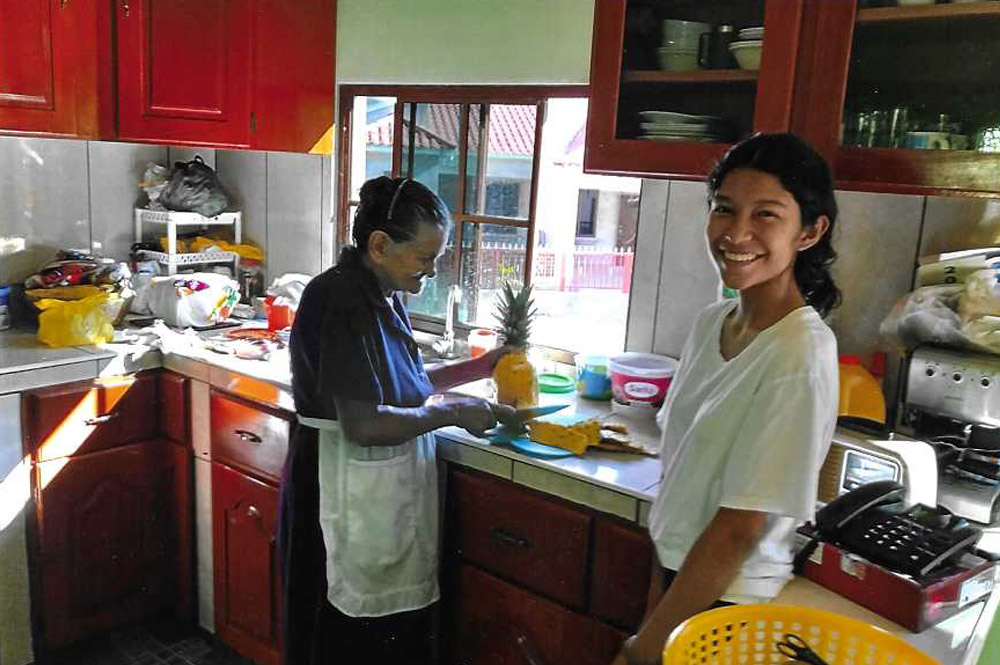The Life History of Esperanza
Esperanza was born in 1931 to a very poor family in rural El Salvador. As was the case with most rural poor families, her family could not afford to send her to school. She married at age 17 and had eight children–5 boys and 3 girls. It wasn’t until all the boys were at least 10 years old that the family had enough labor to grow enough corn and beans to feed the family year-round. None of her children could go to school, for lack of funds and their labor being needed for the family’s survival.

In the latter half of the 1970s, the demographics of El Salvador were as follows: 2% of the population (14 families) owned all the fertile land and all the big business and industry; 5% of the population formed the middle class, 15% were a very poor working class, and 78% had absolutely nothing–they did not own their land and did not have steady work year-round, but instead were employed in November and December, picking coffee, sugar cane or cotton-for $1/day and an annual income of $60.
Given the social instability of such a demographic, the poor of El Salvador began organizing themselves politically (peacefully) for a better life. The two percent of the population who were wealthy were alarmed by this and formed death squads to assassinate the organizers.
In March of 1980, the death squad, ORDEN, murdered Esperanza’s oldest son and his wife, leaving Esperanza with an orphaned granddaughter, Monica, age two. In May of that same year, ORDEN murdered her second oldest son and his wife, leaving her with an orphaned granddaughter, Sandra, age one. The next month, ORDEN killed Esperanza’s husband on his way to work. So, in June of 1980, Esperanza and her remaining children–three boys, three girls, and two orphaned granddaughters–entered a permanent state of flight from the death squads, running day and night, as were tens of thousands of other rural poor.
Esperanza noted the death squads were chasing them high above water sources. She recalled coming upon piles of dead children’s bodies–babies and children who had either thirsted or starved to death. Then, in 1982, two years into running, her 16-year-old son starved to death. At this point, she and her children and grandchildren, swollen with malnutrition, fled to Honduras, where they were taken in by Mesa Grande Refugee Camp, run by the United Nations. Some 11,000 Salvadoran refugees were living there.
None of the refugees at Mesa Grande Refugee Camp wanted to be refugees, so they organized their return to El Salvador during the same war they fled. This was the first time in world history that refugees had returned en masse to their country of origin during the same war they fled. The first return was on October 10, 1987, when some 4,314 refugees returned. The people of Teosinte were part of the second return of about 2,000 people on August 17, 1988. The Salvadoran organized poor made history, courageously returning, despite all their names being on death squad lists to be exterminated. Of the second return, some 350 people were sent to the village of Teosinte, including Esperanza, her daughter, Blanca and family, and her two grandchildren, Monica and Sandra. Teosinte had been bombed to oblivion by the Salvadoran Air Force in 1981. The four survivors fled and never returned. The village lay in ruins until the people returned in 1988 to reconstruct it.
Esperanza was a model parent and grandparent. Although she never had the privilege of education, she empowered her children and grandchildren to seek education through university. She now lives with her granddaughter, Monica, who became a teacher, in a very lovely middle-class home in Teosinte. Esperanza is 92 years old and always beaming with a ready smile that lights up the room. She is a woman of rock-solid faith, infinite love–living up to the meaning of her name: hope. Esperanza’s story is a true testimony to the grandeur of the human spirit. The photo above shows Esperanza preparing food with great-granddaughter, Sofia in the home that her granddaughter, Monica, was able to have built for them.
